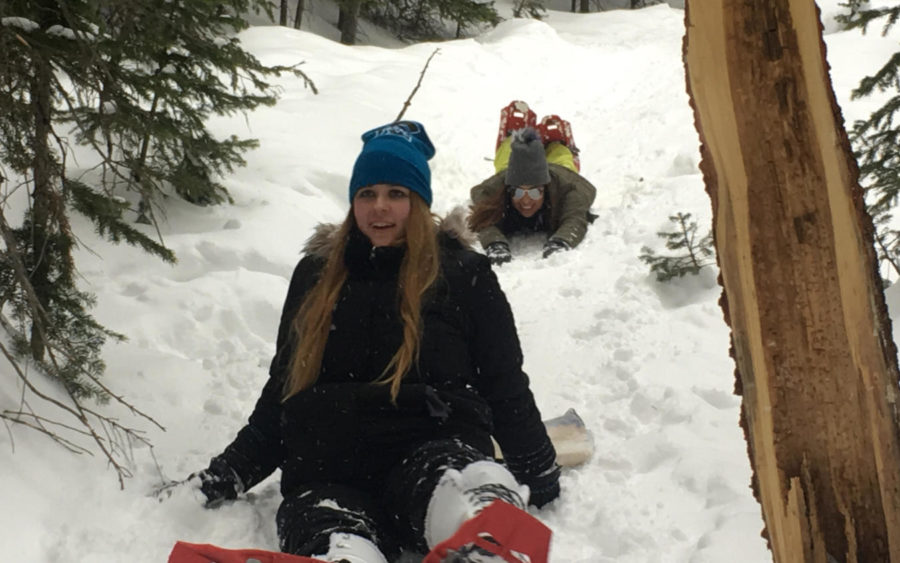APES students mix fun with learning on snowy field trip
Jennifer Sample front) and Michelle Lopez) slide down a snow slide during the AP Environmental Science field trip to Estes Park.
February 15, 2018
Field trips for school are often more educational than fun in students’ minds, but the past two Wednesdays, students found a way to combine the two. AP Environmental students spent the entire school days in Rocky Mountain National Park with Ms. Corrine Yahn, Mr. Taylor Plantt, and park rangers to learn about how snowfall in the mountains affects the amount of water available to citizens across the watershed.
After departing from West at the beginning of the school day, students were welcomed at the visitor center in the park by a group of rangers that helped guide the students throughout the day. As the young environmentalists would be in the snow for much of the day, they were told to dress in warm, waterproof layers. However as some were unable to supply their own gloves, heavy jackets, boots, and snow pants, the national park loaned the students the clothing as needed. The park also provided the classes and chaperones with snowshoes to make the trek easier. The park rangers also gave a PowerPoint presentation about the park, snowfall, and how Estes is involved in the provision of water.
Once the students were dressed and informed, they headed up to the Bear Lake trailhead to begin the field work. The groups were divided up into groups that explored different parts of the land. Once groups found a slope they found satisfactory, they began digging snow pits where they would conduct their research. Students observed the different layers of snow, temperatures, depth of snow in that area, and environmental factors contributing to the results. After over an hour in the snow, the environmentalists headed down the mountain, but this time not on foot. The groups slid down the mountain on a smoothed out canal the rangers called a “snow slide”. When asked about her favorite part of the trip, senior Kaelyn Fletcher responded that she most remembered “when we went down the snow slide. It was a cool thing to do after working in the snow.” Students were then shuttled back down to West as school was ending.
The field trip was a hands-on approach to teaching the kids about where the water in their watershed comes from. “It was one of the better ones I’ve been on because it was hands on and cool and not a lot of people get to experience it like we did,” Fletcher said. “I don’t regret going at all,” she declared.



